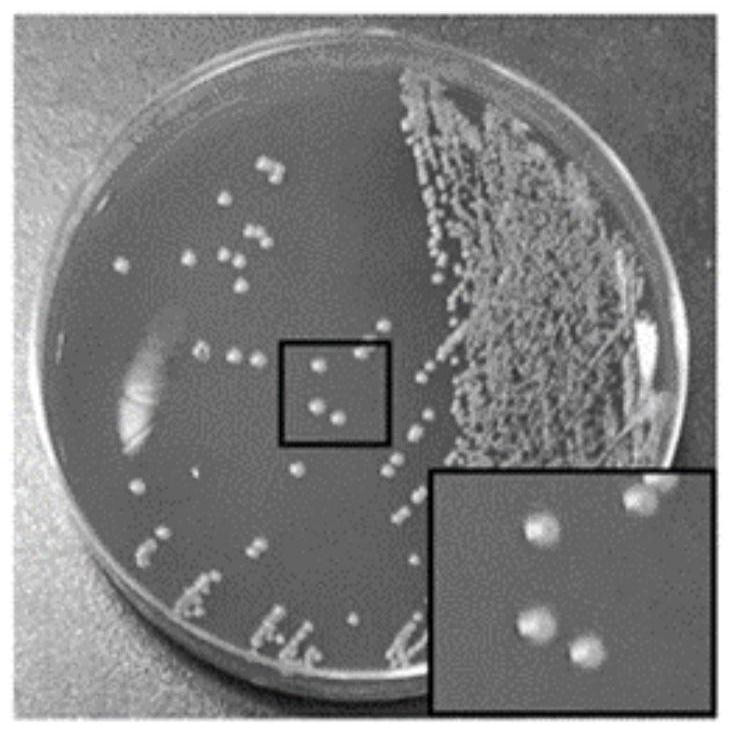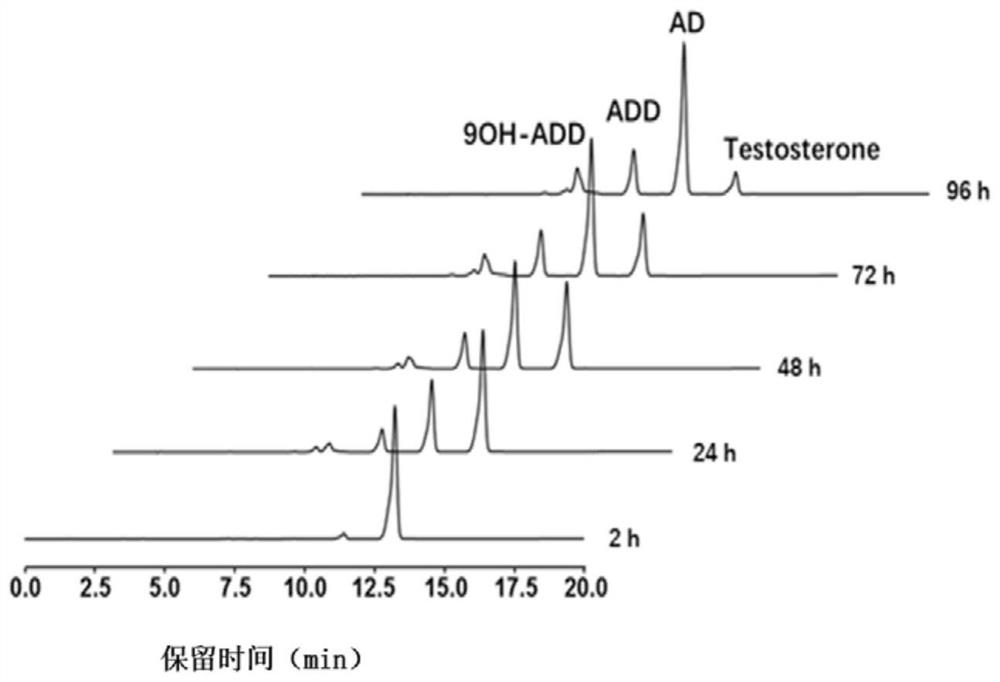Application of microorganism containing 3 beta-steroid dehydrogenase gene as marker of male depression
A technology of steroid dehydrogenase and depression, which is applied in the field of medicine, can solve problems such as depression testosterone deficiency, primary secondary testosterone reduction, and not fully explained
- Summary
- Abstract
- Description
- Claims
- Application Information
AI Technical Summary
Problems solved by technology
Method used
Image
Examples
Embodiment 1
[0048] Based on the hypothesis that the degradation of testosterone by bacteria in the intestinal tract can reduce serum testosterone, the inventors mixed 0.5 g of fresh stool samples from patients with depression with 50 mL of selective medium (2mM MgSO 4 ·7H 2 O, 0.1mM CaCl 2 2H 2 O, 48mM Na 2 HPO 4 , 22mM KH 2 PO 4 , 9mM NaCl, 19mM NH 4 Cl and 3mg / L testosterone) mixed. Under anaerobic or aerobic culture conditions, culture on a rotary shaker at 37°C and 250 rpm in the dark. When the concentration of testosterone in the medium was observed to decrease to 40%, 1 mL of the culture suspension was transferred to a 250 mL Erlenmeyer flask containing 49 mL of fresh selection medium. This process was repeated five times over a 26-day period, and the culture suspension from the fifth Erlenmeyer flask was inoculated onto Columbia blood agar plates to isolate testosterone-degrading strains such as figure 1 shown.
[0049] The strain was identified as Mycobacterium neoaurum ...
Embodiment 2
[0052] In order to explore whether M.neoaurum in the intestine can induce depression-like behavior in rats, we administered M.neoaurum to rats by intragastric administration. Animal studies were performed in strict accordance with the Experimental Animal Care and Use Protocol (S0271902190A) approved by the Animal Experiment Center of Renmin Hospital of Wuhan University. SD rats (male, 6 weeks old, 6-12 per group) were purchased from Hunan SJA Experimental Animal Company (Hunan, China), and used for the experiment after being fed and adapted to Specific Pathogen Free (SPF) in the Animal Experiment Center of Renmin Hospital of Wuhan University for one week . Rats were housed under SPF conditions on a 12-h light and dark schedule in a humidity-controlled and temperature-controlled (22°C-25°C) environment with autoclaved food and autoclaved water.
[0053] The two-way interaction between gut microbes and the brain is known as the “Microbiota–Gut–Brain” (MGB) axis. The MGB axis i...
Embodiment 3
[0058] We speculate that the depressive-like behavior of M. neoaurum is due to its ability to degrade testosterone. Therefore, if a testosterone-degrading bacterium is constructed through genetic engineering, then the bacterium can also cause depression-like behavior in rats by gavage. In order to construct recombinant Escherichia coli, we tried to find the gene sequence of testosterone degrading enzyme in M.neoaurum. By performing whole-genome complete map sequencing on the strain of M.neoaurum we isolated, we obtained the whole-genome sequence information. In our whole genome of M.neoaurum chromosome (66.26% GC, accession number: CP074376), the gene MN2019_09885 encoding 3β-steroid dehydrogenase (3β-HSD) was locked by us.
[0059] In order to construct testosterone-degrading bacteria and verify that the protein expressed by this sequence has testosterone-degrading ability, we performed heterologous expression. Plasmid pET28a was used as an overexpression vector to increase...
PUM
 Login to View More
Login to View More Abstract
Description
Claims
Application Information
 Login to View More
Login to View More - Generate Ideas
- Intellectual Property
- Life Sciences
- Materials
- Tech Scout
- Unparalleled Data Quality
- Higher Quality Content
- 60% Fewer Hallucinations
Browse by: Latest US Patents, China's latest patents, Technical Efficacy Thesaurus, Application Domain, Technology Topic, Popular Technical Reports.
© 2025 PatSnap. All rights reserved.Legal|Privacy policy|Modern Slavery Act Transparency Statement|Sitemap|About US| Contact US: help@patsnap.com



